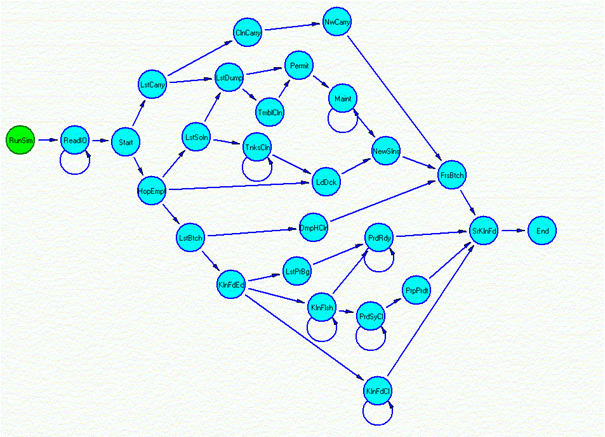
SMART DOG MININGTM
It
takes a smart dog to find hidden treasures
What Shall We Do With A Process Simulator?

What shall we do with a Process Simulator?
What shall we do with a Process Simulator?
What shall we do with a Process Simulator?
Early in the morning.
Quick question; by a show of hands, how many out there have a
process simulator or model of their plant?
How many ever use it beyond bringing it out now and again to
show people this wonder-full package that that you have to model
your operation?
Probably not many.
Next question, how many have a data historian to gather and manage
your process data?
Ever think of using the two together for process control?
Or even better using the expensive model as an example to
take your data historian tools to create an integrated plant model?
A key part of any engineer’s job is to figure out why things are not
working right. In
mining and mineral processing this can be a big part.
With the growth in big data this is supposedly easier,
because you have all that information.
But what does it mean!
When your plant is not running right and the process control system
seems to be making things work, figuring out why is important and
not figuring out can be expensive.
At some point, most mines have invested in a process simulation
model of the process, if at no other time, during the initial
design. This was
primarily used for preparing and balancing the flowsheet and doing
initial equipment sizing.
But it can also be used for checking a plants operation and
also predicting how the plant should operate under changing feed
conditions. And yes,
many of these models are large and complicated to run, they can be
used along with data historians to prepare simpler models of the
plant and then using the big data to predict what should have
happened.
Another use is to tie it in with the mine planning to predict what
various mining plans will do to plant control, and help being
prepared for what might happen.
So how, start with your simulator, and then take your historical (or
as some would say your hysterical) data and compare what should have
happened to what did happen.
Working forward and back the actual impacts can be determined
and then the model can be adjusted (or a new simpler model
prepared).
While the first couple of run troughs of this might be frustrating
and tedious, it will get easier like learning to ride a bicycle.
And you already have the bike (tools) so make use of them.
It will pay off.

o
40+ years’ experience in the mining industry with strong mineral
processing experience in precious metals, copper, industrial
minerals, coal, and phosphate
o
Operational experience in precious metals, coal, and phosphate plus
in petrochemicals.
o
Extensive experience performing studies and determining feasibility
in the US and international (United States, Canada, Mexico, Ecuador,
Columbia, Venezuela, Chile, China, India, Indonesia, and Greece).
o
E-mail:
info@smartdogmining.com
